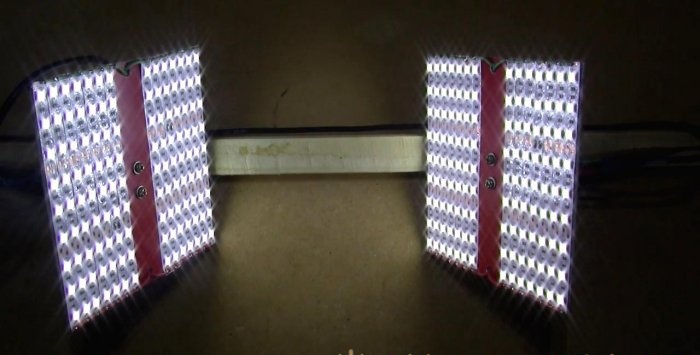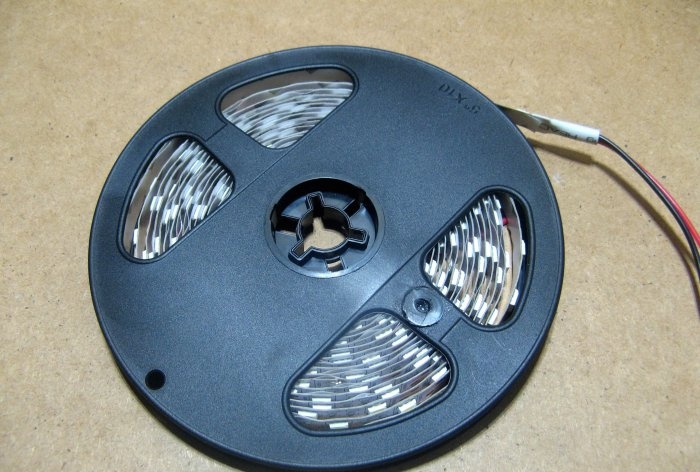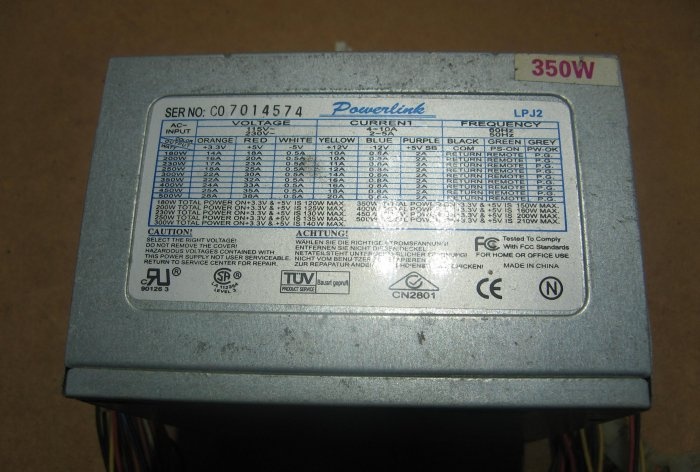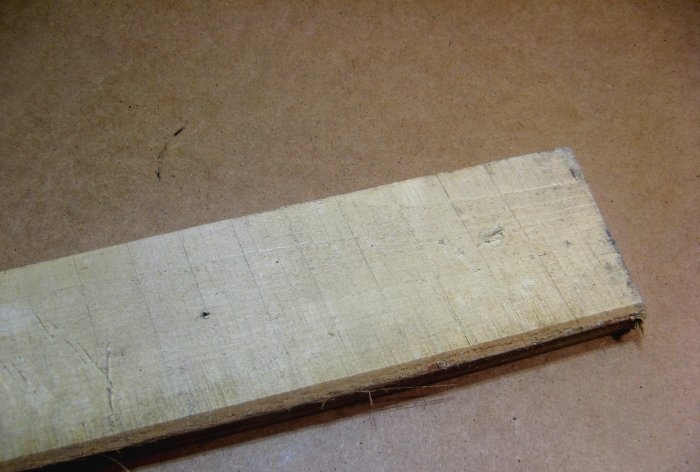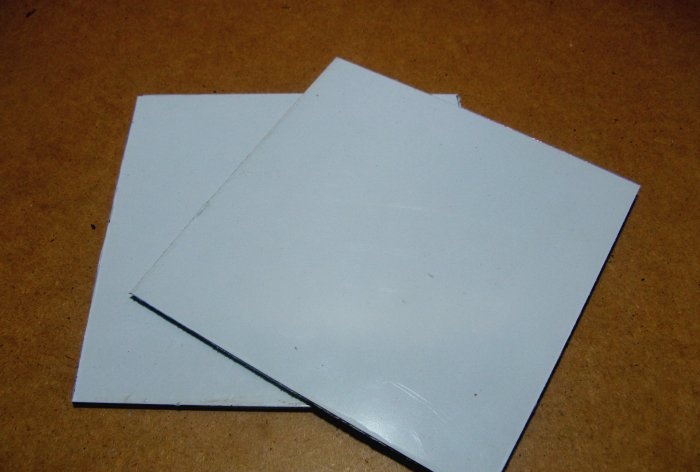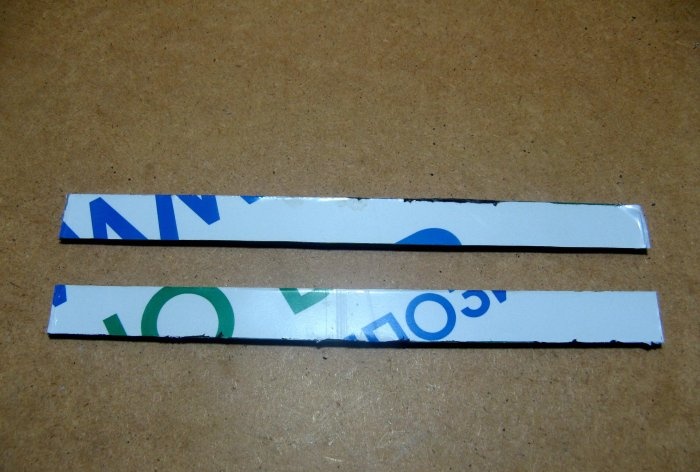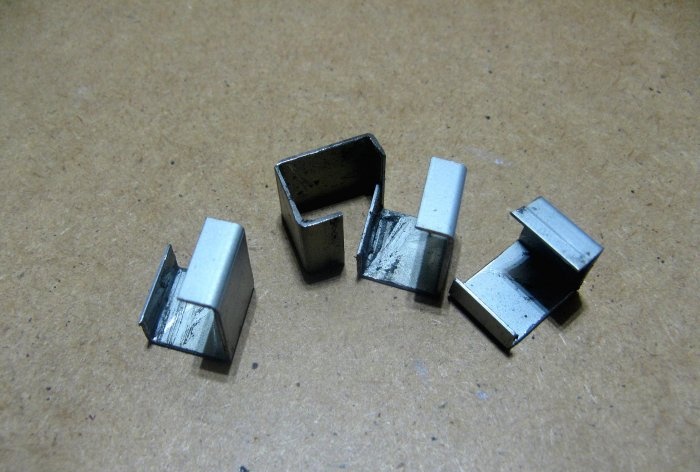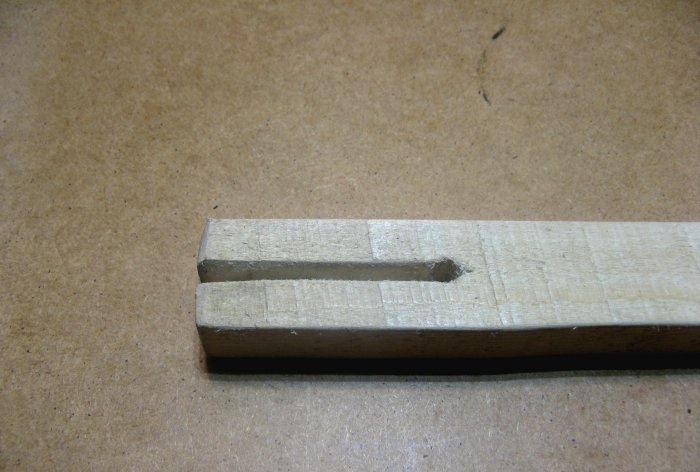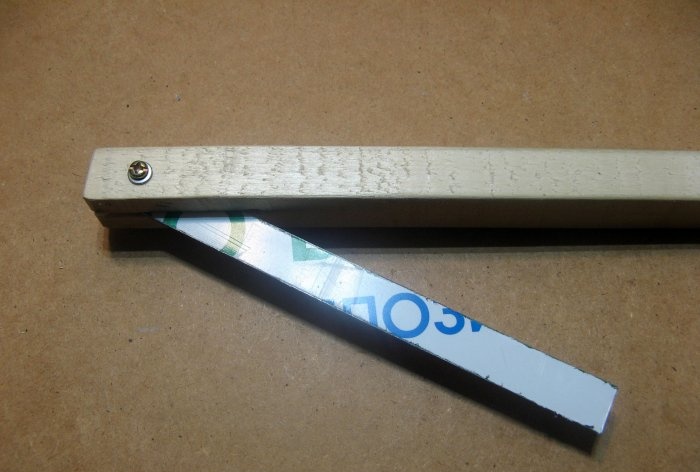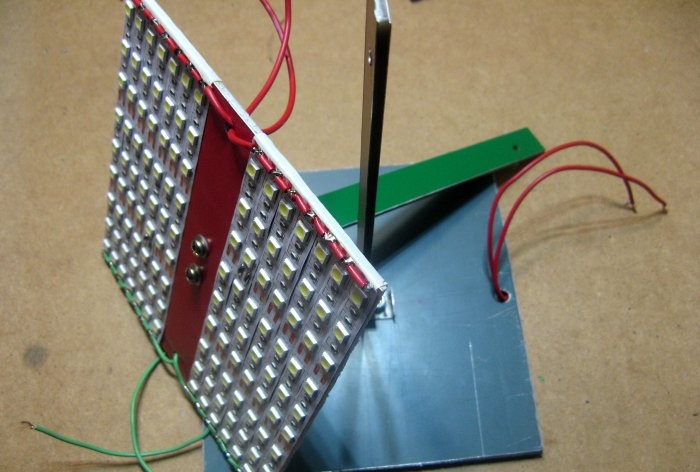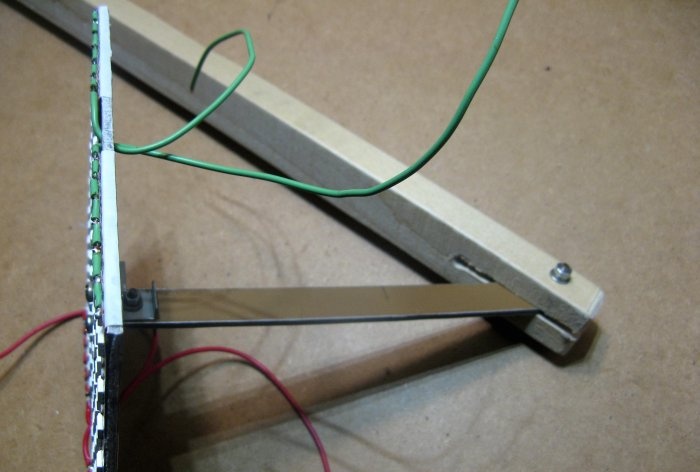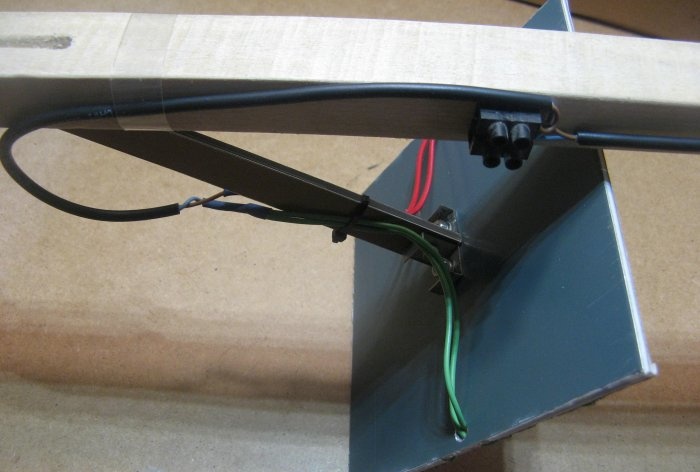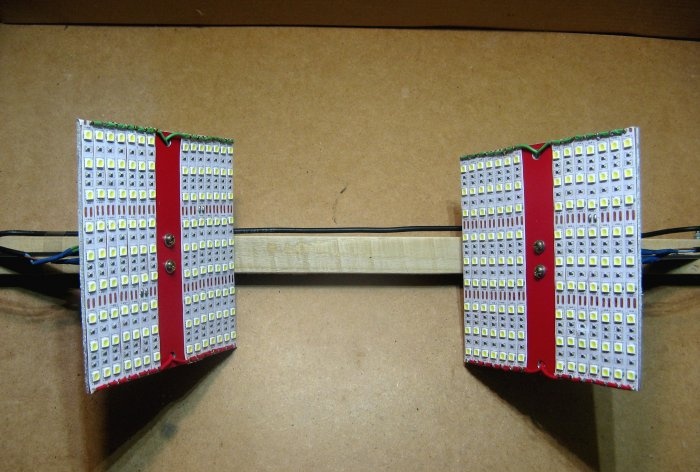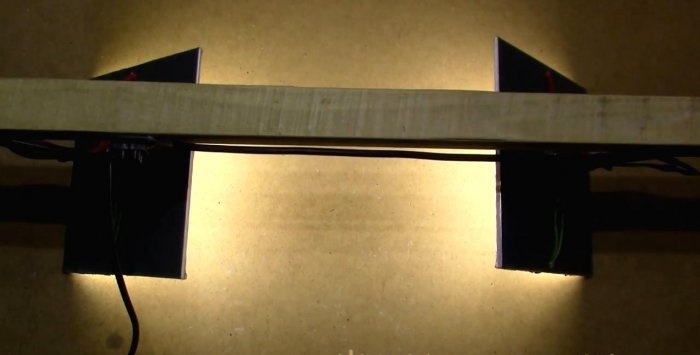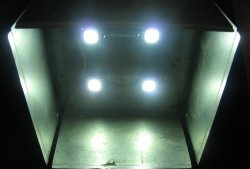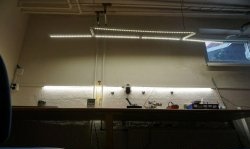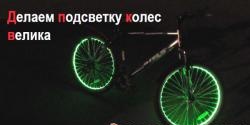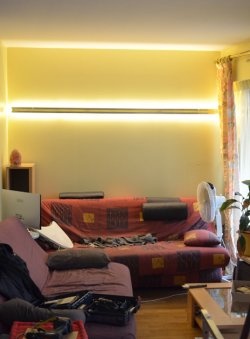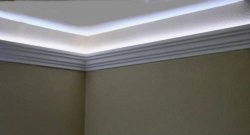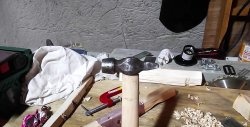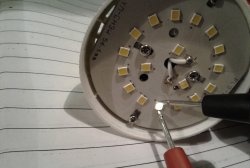LED lighting for the workshop
When you do something on your desk, good lighting is very necessary. I used a fluorescent lamp. Its light was enough for all my needs. While putting things in order in the workshop, I successfully broke my lighting. Working with ceiling lighting is very inconvenient. I made a quick decision. Assemble a new backlight for your desktop. You can use a ready-made spotlight. Ideal option, do-it-yourself lighting.
What do we need for production?
Not long ago I bought LED strip in China. The reel of tape is five meters long. This is just enough for my design, there will still be some left, but not much. The strip is assembled using 5050 format LEDs. There are three LED. Each is connected through a current-limiting resistor to connect a 12-volt circuit.
I'm going to power it from a standard computer power supply.
You need a thick rail to attach panels with LEDs to. I took a pine board. I'll cut off a narrow strip from it.
The reflector plates will be two pieces of composite plastic. The dimensions of each segment are 15cm*15cm. The size is matched to the lengths of the LED strip. The color of the records does not matter. Mine is red and has a protective film on it for now.
The reflectors will be held in place by strips of composite plastic. It could just be made of plastic, there’s no big load here.
The stands will be attached to the reflector using corners. You can take ready-made ones or cut them from anything. I sawed from a large corner of old office equipment.
Backlight assembly
I sawed off a strip from the board. I sanded and made cuts on both sides. The cut was made to such a depth that the stand folded at an angle of 45 degrees.
We put the stand into the slot and drill a through hole. Screw hole diameter M4. Now you can clearly see the angle at which the stand can be folded. Insert the screw and check the adjustment. We take out the screw; at this stage we don’t need it.
We glue pieces of tape onto the reflectors, which we pre-cut. It turns out that there are two such reflectors.
All segments must be soldered in parallel. I also drilled holes for the LED strip power wires. We screw the stands to the reflectors.
We secure the stand using the previously removed M4 screw. We tighten it.
Wires with LEDs solder together by color. We solder the power wires to them.
We also fix the wires using a strip of tape from a PET bottle. We connect the wires from the left and right reflectors together. For convenience, I installed a block. The wires from the power supply will, in turn, be connected to it.
This is what the finished design looks like. It will be attached to the wall.
Video demonstration:
Similar master classes
Particularly interesting
Comments (0)

